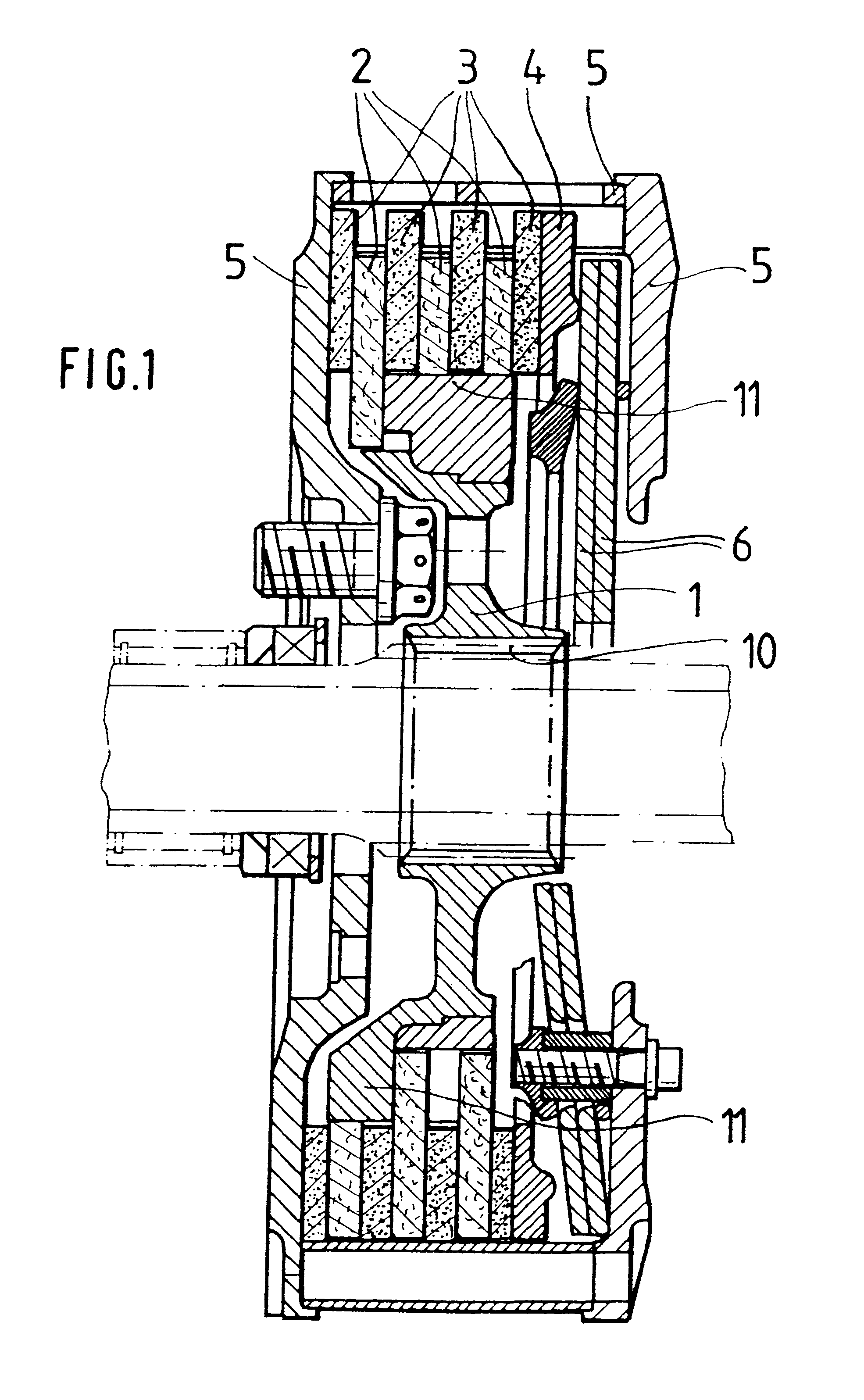Friction clutch with nickel-chromium alloy spring elements
a technology of friction clutches and spring elements, applied in the field of friction clutches, can solve the problems of increasing the inertial mass, losing elastic properties and strength, and even irreversible loss
- Summary
- Abstract
- Description
- Claims
- Application Information
AI Technical Summary
Benefits of technology
Problems solved by technology
Method used
Image
Examples
Embodiment Construction
The multidisk clutch shown in FIG. 1 has a hub 1 with internal toothing 10 in order for it to be mounted in a rotationally fixed, axially displaceable manner on a transmission shaft. Via further external toothing 11, the friction linings 2 are connected to the hub 10 in a rotationally fixed manner. A further set of friction linings 3 is connected, in a rotationally fixed manner, to the three-part clutch casing 5. As can be seen from the drawing, the friction linings 2 and the friction linings 3 are arranged alternately in the axial direction, so that when the casing 5 rotates with respect to the hub 1 the friction linings 2 and 3 are able to transmit a dragging moment. The friction between the linings 2 and 3 is determined, inter alia, by the pressure force of the spring device 6, which in this case is designed as a diaphragm spring and acts on the pressure plate 4, which is guided in a rotationally fixed manner in the clutch casing 5. The spring device 6 is in this case supported i...
PUM
| Property | Measurement | Unit |
|---|---|---|
| Fraction | aaaaa | aaaaa |
| Fraction | aaaaa | aaaaa |
| Fraction | aaaaa | aaaaa |
Abstract
Description
Claims
Application Information
 Login to View More
Login to View More - R&D
- Intellectual Property
- Life Sciences
- Materials
- Tech Scout
- Unparalleled Data Quality
- Higher Quality Content
- 60% Fewer Hallucinations
Browse by: Latest US Patents, China's latest patents, Technical Efficacy Thesaurus, Application Domain, Technology Topic, Popular Technical Reports.
© 2025 PatSnap. All rights reserved.Legal|Privacy policy|Modern Slavery Act Transparency Statement|Sitemap|About US| Contact US: help@patsnap.com



